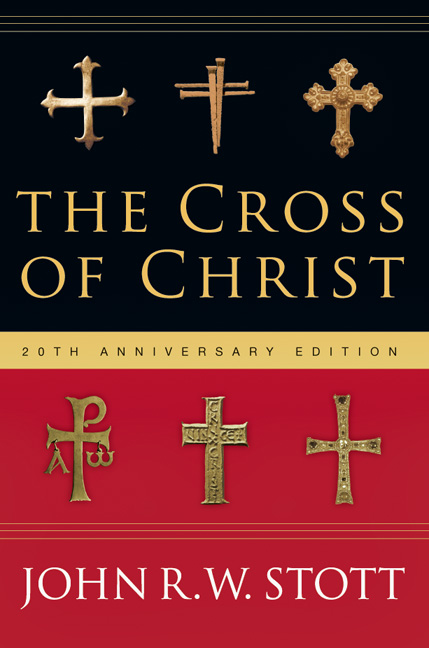This Sunday Chris Postma will preaching from the Gospel of Luke, continuing our sermon series on that book of the Bible. Following that, we will take a break from Luke and begin an Easter sermon series on the atonement called Images of the Atonement.
The idea for this series came to me quite a few years ago while I was reading The Cross of Christ by John Stott. This is an absolutely brilliant book that I am reading again. It is as helpful as it was the first time.
In the chapter I read this morning, Stott is forming an argument that will eventually explain why the cross, and Christ’s death upon it, was necessary. Part of the early formation of his argument pertains to the holiness of God and God’s abhorrence of sin. Stott declares that “sin cannot approach God, and God cannot tolerate sin” (106). In a culture so preoccupied with tolerance—a word that most in that culture do not even understand—the intolerance of God might be a contentious issue. Nevertheless, it is an accurate description of God’s posture towards sin.
Stott notes five biblical metaphors that Scripture’s authors use to portray and describe God’s hatred of sin and his incompatibility with it.
The first metaphor is that of height. Psalms 7:17 declares “I will give to the Lord the thanks due to his righteousness, and I will sing praise to the name of the Lord, the Most High” (ESV, emphasis mine) and Psalms 99:2 recognizes God’s elevated positon: “The Lord is great in Zion; he is exalted over all the peoples” (ESV). Stott comments, “His lofty exaltation expresses both his sovereignty over the nations, the earth and ‘all gods’, and also his inaccessibility to sinners” (106).
The next metaphor put forward is that of distance. Stott explains, “God is not only ‘high above’ us, but ‘far away’ from us also. We dare not approach too close. Indeed, many are the biblical injunctions to keep our distance. … Sinners cannot approach the all-holy God with impunity. On the last day, those who have not found refuge and cleansing in Christ will hear those most terrible of all words: ‘Depart from me’” (107). Whether it is the Israelites being instructed to keep off the mountain where God’s presence alighted or to stay around a thousand yards from the ark, the Bible elaborates on the holiness of God through the concept of distance.
Light is another metaphorical device used to depict the holiness of God. John, Jesus’s beloved disciple, writes, “This is the message we have heard from him and proclaim to you, that God is light, and in him is no darkness at all” (ESV, emphasis mine). God dwells in unapproachable light (1 Timothy 6:16) and nobody can see God and live (Exodus 33:20).
Fire is the fourth image that Scripture uses to demonstrate God’s hatred of sin. One certainly cannot approach fire too closely and it is regularly used to describe God’s judgment of sin as well as his desire to purify his people from sin’s contamination: our God is a consuming fire (Hebrews 12:29).
The final metaphor is, according to Stott, “is the most dramatic of all” (108). Stott is referring to the metaphor of vomiting. Stott provides examples, “The immoral and idolatrous practices of the Canaanites were so disgusting, it is written, that ‘the land vomited out its inhabitants’, and the Israelites were warned that if they committed the same offences, the land would vomit them out as well” (108). God cannot stomach sin, and his reaction is to purge himself of any connection with it.
These five biblical metaphors help us understand God’s inability and unwillingness to tolerate sin. They help us picture his revulsion and aversion to sin. They reinforce his holiness and absolute righteousness. Stott summarizes, “All five metaphors illustrate the utter incompatibility of divine holiness and human sin. Height and distance, light, fire and vomiting all say that God cannot be in the presence of sin, and that if it approaches him too closely it is repudiated or consumed” (108).
Leading into our series on the atonement, we must realize that sin is not something God can tolerate and it is not something he can ignore. Sin had to be dealt with. And it was, at the cross of Christ.




Leave a Comment